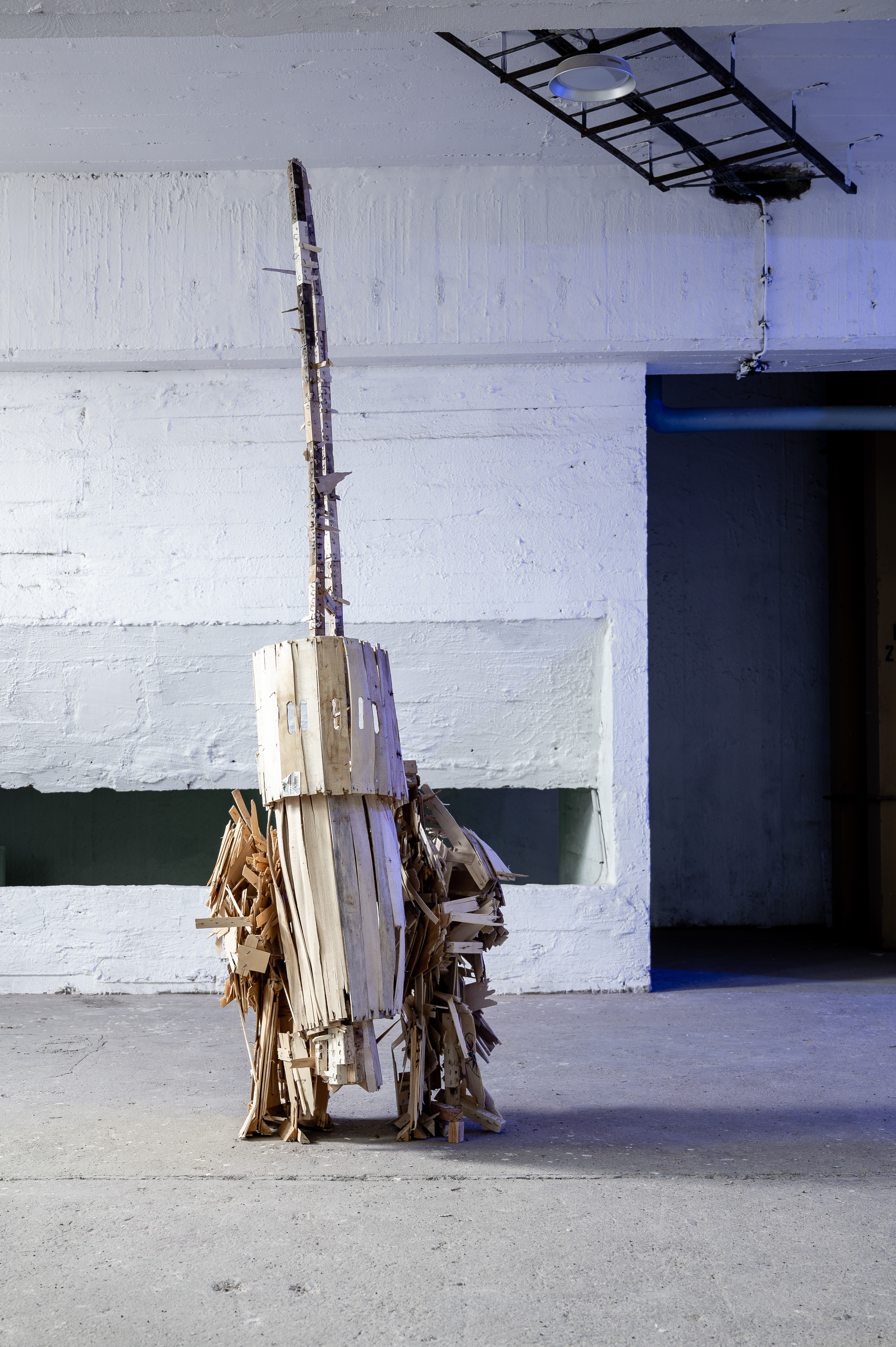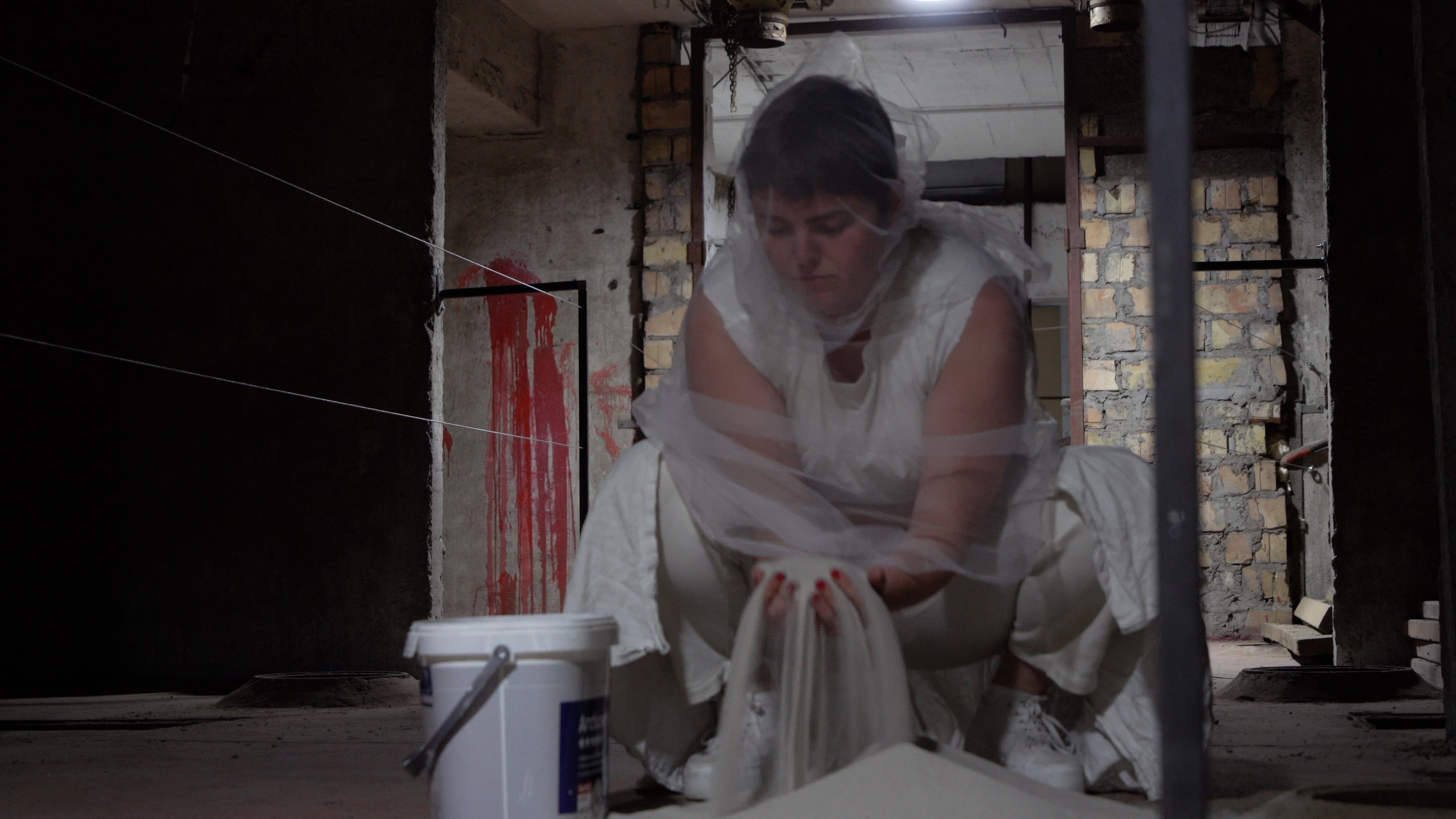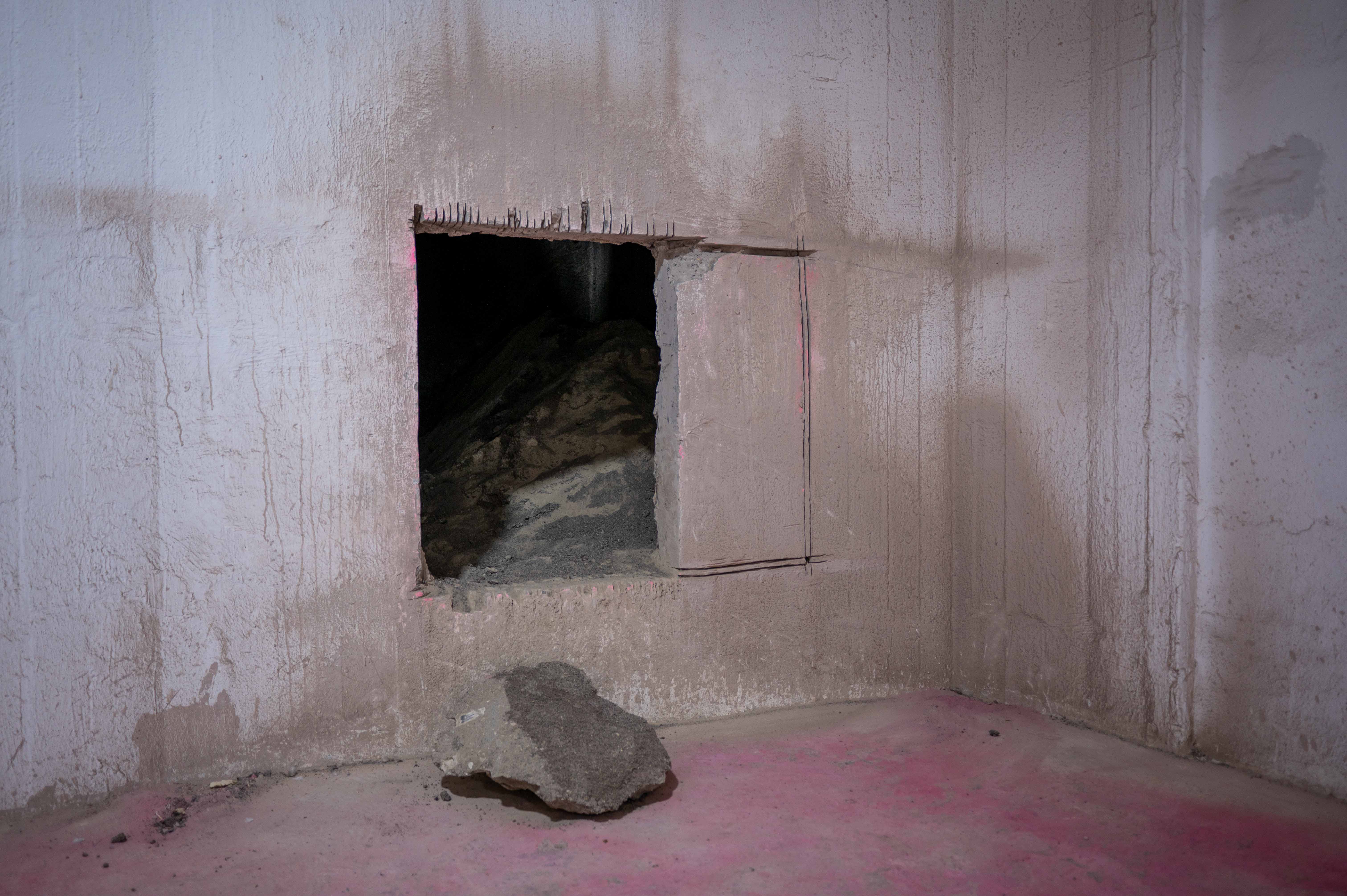Udo Koloska
Aber
immer wuchsen die Märkte, immer stieg der Bedarf. *
Gemorstes
Manifest
Installation an Getreidetrocknungsmaschine 2022
(Solenoid Magnete, Arduino, Kabel, Lochblech, Neonröhren)
Texte des Kommunistischen Manifests - in Morsezeichen übersetzt - erzeugen rhythmische Muster, überlagern sich, evozieren Resonanzen einer industriellen Vergangenheit.
Eine meiner ersten Eindrücke bei der Begegnung mit diesem Ort war die Stille, die Abwesenheit von industriellem Sound, den ich mir mit den Maschinen und Prozessen des Getreidesilos in Zusammenhang vorstellte – gespeist von Erinnerungen an Fabriken und Betriebe meiner DDR-Jugend und Kindheit.
Stattdessen der entfernte Klang der Bahnlinie, das Schließen der Schranken, Taubengurren.
Mein Interesse an diesem Ort beruht auf diesem Gegensatz. Die Architektur, die Maschinen und Röhrensysteme sind materielle Manifestation von menschlichen Ideen, sozialen Utopien, Ingenieurleistungen und Fortschrittsglauben. Die klangliche Erforschung dieser Relikte ist für mich eine Form sinnlicher ArchÄologie, die nicht nur nach vergangenen klanglichen Realitäten forscht, sondern auch idividuelle Erinnerung provoziert. Das Morsealphabet in der heutigen Form wurde im gleichen Jahr veröffentlicht, in dem auch das Kommunistische Manifest erschien. Neben einer klarsichtigen Beschreibung kapitalistischer Produktions- und Gesellschaftsstrukturen folgt auch das Manifest einem Entwicklungsgedanken, der angesichts ökologischer Katastrophen in Frage steht.
*
Marx/Engels, Kommunistisches Manifest, 1848
But the markets always grew, the demand always increased. *
Morsed Manifesto
Installation on grain drying machine 2022
(solenoid magnets, arduino, cables, perforated plate, neon tubes)
Texts of the Communist Manifesto - translated into Morse code - create rhythmic patterns, overlap, evoke resonances of an industrial past.
One of my first impressions upon encountering this place was the silenc, the absence of industrial sound that I imagined with the machines and processes of the grain silo, fed by memories of factories of my GDR youth and childhood. Instea the distant sound of the railway line, the closing of the barriers, the cooing of pigeons.
My interest in this place is based on this contrast. The architecture,
the machines and pipe systems are material manifestations of human ideas
of human ideas, social utopias, feats of engineering and belief in
belief in progress. The sonic exploration of these relics is for me a form of sensual archeology, which not only searches for past sonic realities, but also provokes an individual memory beyond the usual historiography.
The Morse code in its present form was published in the same year in which the Communist Manifesto was published In addition to a clear-eyed description of capitalist production and social structures, th structures of production and society, the Manifesto also follows an developmental thought, which is called into question in the face of ecologica catastrophes.
* Marx/Engels, Communist Manifesto, 1848
Udo
Koloska ist Medienkünstler, der sich zwischen Sound, Video und
Performance bewegt. Seine Arbeiten reflektieren die Medialität von
Klängen und Bildern. Er erforscht und experimentiert mit der
technischen Materialität von Medien und ihrer Beziehung zur
Realität. Auf verschiedenen Ebenen ist die Zeit
und das Verhältnis zum Jetzt und Nicht-Jetzt ein wesentlicher
Ankerpunkt. Er studierte an der Universität Potsdam und der UdK Berlin
und lebt in Potsdam.
Udo Koloska is a media artist who moves between sound, video and performance. He explores and experiments with the technical materiality of media and their relationship to reality. On various levels, time and the relationship to the now and not-now is an essential anchor point. He studied at the University of Potsdam and the UdK Berlin and lives in Potsdam.
Udo Koloska is a media artist who moves between sound, video and performance. He explores and experiments with the technical materiality of media and their relationship to reality. On various levels, time and the relationship to the now and not-now is an essential anchor point. He studied at the University of Potsdam and the UdK Berlin and lives in Potsdam.
speichern kollektivität - die kunst viele zu sein 01.-23.09.23 — speichern kollektivität - die kunst viele zu sein 01.-23.09.23 — speichern kollektivität - die kunst viele zu sein 01.-23.09.23























